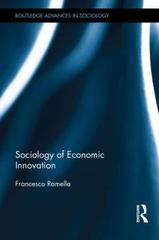Question
At a recent international finance and economics conference in Bamako, Mali, Jose Amaral of Brazil and Lucinda Mantri of India are discussing how to spur
At a recent international finance and economics conference in Bamako, Mali, Jose Amaral of Brazil and Lucinda Mantri of India are discussing how to spur their countries' economic growth. Amaral believes that growth can be bolstered by removing institutional impediments and suggests several possibilities for Brazil: launching a rural literacy program, clarifying property rights laws, and implementing a new dividend tax on foreign investors.
Mantri responds that for India capital deepening will be more effective and has proposed the following ideas: building a group of auto and textile factories in the southern states, developing a north-south and east-west highway network, and sponsoring a patent initiative.
In response, Amaral says to Mantri:
"Based on endogenous growth theory, one of those proposals is more likely to raise total factor productivity than result in pure capital deepening."
While Mantri recognizes that India lacks the significant natural resources of Brazil, she states that India can overcome this challenge by bolstering long-term growth through three channels:
Channel 1 Deepening the capital base
Channel 2 Making investments in technology
Channel 3 Maintaining a low Rupee exchange rate
Each country's basic economic statistics were presented at the conference. Selected data for Brazil and India are presented in Exhibit1. Adama Kant, a fund manager based in Mali, is planning to increase the fund's allocation to international equities, and after some preliminary analysis, has determined the new allocation will be to Brazilian or Indian equities. After reviewing the data in Exhibit1, Kant decides that the allocation will be to Indian equities.
Exhibit 1 Economic Statistics, Brazil and India
Economic StatisticBrazilIndia
GDP/capita, 2010$9,589$3,575
GDP/capita Growth, 1990-20101.62%4.84%
GDP Growth, 2005-20084.9%8.2%
Growth due to Labor Productivity Component2.9%6.0%
- Growth due to Capital Deepening Component3.4%3.6%
Kant is concerned about the low standard of living in Mali and its large informal sector. To improve per capita GDP, Kant is considering five specific strategies:
Strategy 1 Lower the country's tax rate.
Strategy 2 Introduce policies that encourage the return of highly-educated Malian emigrants.
Strategy 3 Build day care centers to permit greater participation of women in the workforce.
Strategy 4 Impose high tariffs on imports to protect the country's nascent industries.
Strategy 5 Use economic development bank loans to improve the country's transport and manufacturing infrastructure.
Q1) Which of Amaral's initiatives is least likely to achieve his stated growth objective?
Q2) Which proposal for India is Amaral most likely referring to in his response to Mantri?
Q3) The channel that is least likely to help India overcome its challenge of lacking significant natural resources is:
Q4) Based upon Exhibit1, which Indian economic statistic least likely supports Kant's international equity allocation preference?
Q5) The strategy that is least likely to improve per capita GDP in Mali is:
Q6) Which of the following strategies being considered by Kant is most likely to undermine or delay convergence with developed economies?
Step by Step Solution
There are 3 Steps involved in it
Step: 1

Get Instant Access to Expert-Tailored Solutions
See step-by-step solutions with expert insights and AI powered tools for academic success
Step: 2

Step: 3

Ace Your Homework with AI
Get the answers you need in no time with our AI-driven, step-by-step assistance
Get Started


